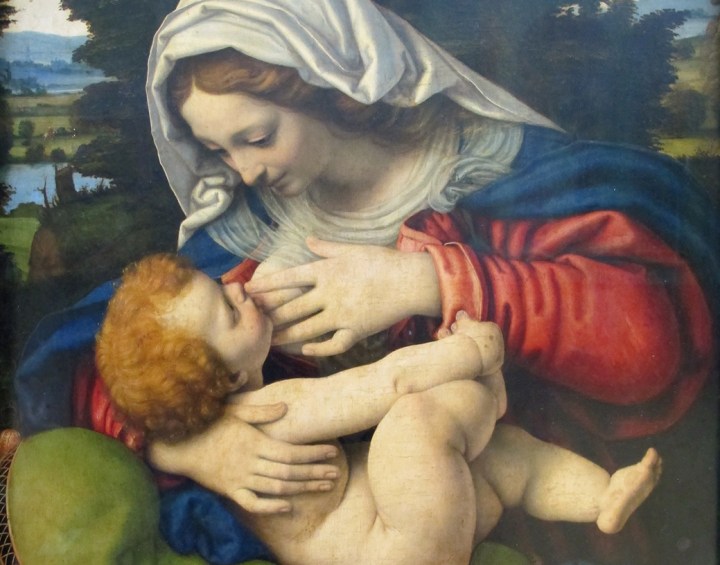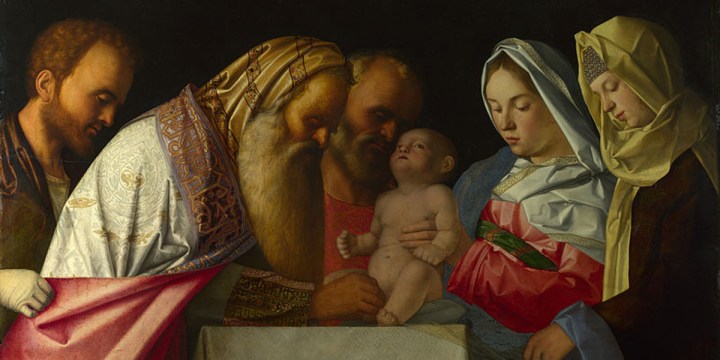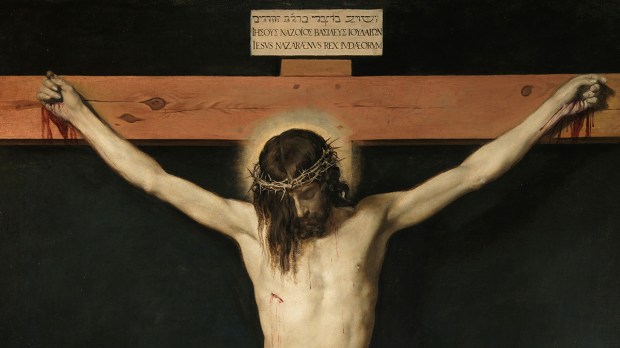Hard-core Catholic traditionalists have lately decried a picture of a young Carlo Acutis (the recently beatified Italian computer programmer) in swimwear during a family vacation, asking whether that is “the outfit of a saint.” The question would be laughable were it not the symptom of something graver. Being scandalized at a kid enjoying his vacation is ostensibly absurd, but the commentary reveals a distorted conception of what sanctity is supposed to be.
St. Teresa and humility
In the sixth book of The Interior Castle, Teresa of Ávila famously defined humility as andar en verdad, “walking on truth.” It suggests that being humble makes one fit (all puns intended) to enter through the narrow gate with relative ease. In that sense, andar (to walk) refers to a general disposition of one’s being. An alternative (and perhaps more comprehensive) translation of Teresa’s definition might read “humility is being in truth,” or maybe even “being truthful,” as if naturally and straightforwardly recognizing one’s own flaws and virtues, dodging the excesses of pride and shame, vanity and self-loathing, carelessness and scruples.
But this being in truth has broader implications. Just as Teresa’s dictum is (first and foremost) an invitation to face, accept, and work on the often-contradictory aspects of one’s personal existence, it can also be read as an exhortation to accept reality for what it is. No matter how much we want it to, a dog is not a bird —as much as a human being is not just a cog in the wheel. Clearly, this humble acceptance of reality is not sheer conformism with the status quo. It is, on the contrary, a challenge that demands a never-ending training in the art of being able to tell right from wrong, true from false. The difference between one and the other, history has (sadly) proven over and over again, is not always clear. That was, after all, Pilate’s question: “what is truth?” (Cf. Jn 18:38).
Prudery, Francis of Assisi, and Medieval art
A specter haunts contemporary life —the specter of prudery: a hyperbolic, all-too-easily shocked or offended sensitivity that tends to see reasons to be scandalized where there are none. Prudery counters humility by making one’s own offended, insulted self the criteria against which everything is to be measured, oftentimes making much ado about (literally) nothing. Needless to say, our sensitivities are not always necessarily aligned with the truth.

This kind of prudery is not uncommon. Countless saints have suffered from it. All of them refer to it as a disease of the soul. Like any disease, prudish scruples can be quite contagious. The excesses of cancel culture are but one collective manifestation of it. Classic works that once were considered canonical (Homer’s Odyssey included) had been removed from curricula in several different universities around the US for all kinds of (unreasonable) reasons. Also, not surprising: In his Republic, Plato himself had already censored Homer, finding it an inadequate influence on soldiers, for example.
In his (already classic) The Sexuality of Christ in Renaissance Art and in Modern Oblivion, the noted art historian Leo Steinberg argues that, as a result of the rise of the Franciscan Order in the second half of the 13th century, an emphasis on Christ’s nakedness and, thus, on his humanity, developed into more human-centered theology, philosophy, and art. In fact, a well-known motto of the Franciscan order was nudus nudum Christum sequi (“follow naked the naked Christ”). As Lee Siegel explains, it was “a radical call to cast aside worldly wealth and belongings and acknowledge the fragile, fallen nature of all men and women.” Whereas Byzantine artists had no special use for Christ’s naked body (busy as they were proving the divinity of Christ in the face of schisms and iconoclasms), the more confidently situated Catholic artists of the late Middle Ages and the Renaissance had room to focus on his humanity instead.

Medieval and Renaissance artists thus freely represented Christ’s nudity not even covered with a loincloth to highlight the Incarnation. Depictions of a breastfeeding Mary would also be used with the same theological intention. The revelation of nakedness, Steinberg explains, would show the depths of Christ’s “humanation” and, consequently, his love for humankind. In fact, Michaelangelo’s not-so-well known naked Christ intends to portray him as a descendant of David accordingto the flesh, Christ’s pose clearly resembling that of David, pointing at their mutual belonging to the Tree of Jesse. Even the popular medieval representations of the Christ child’s circumcision were read as foretelling the crucifixion —as if the first blood spilled by the naked Child was to be later fulfilled in the blood pouring from the naked Christ’s wounds in the Cross. Relics allegedly belonging to Christ’s circumcision were indeed as popular as those of his Passion (and oftentimes paraded on January 1, on the Feast of the Circumcision).
Being the son of Mary, Christ’s own nudity would also be alternatively conceived, in medieval texts, as going in tandem with that of his mother —that is, it would be conceived in somewhat feminine terms. Steinberg explains how the wounds of the Passion were commonly thought of from a motherhood-related standpoint. Through them, believers are born into a new, eternal life. Even the blood and water spilled from Christ’s side wound were compared to Mary’s milk, sustaining and nourishing believers as they grew in the faith. All these theological, sacramental reflections would have been impossible were it not for a deep appreciation of Christ’s naked, tortured body.
All this considered, it can be safely argued that bodies (and naked bodies in particular) were not necessarily scandalizing to our forefathers in the faith, but rather held as a fundamental locus of spiritual life. It is possible that our age, obsessed as it is with virtual realities and metaverses, has forgotten matter matters. But also, an over-spiritualized understanding of religious life has for too long supported an unorthodox pseudo-oblivion of Christ’s incarnation, despite the weekly ceremonial reminder: “this is My body.”

